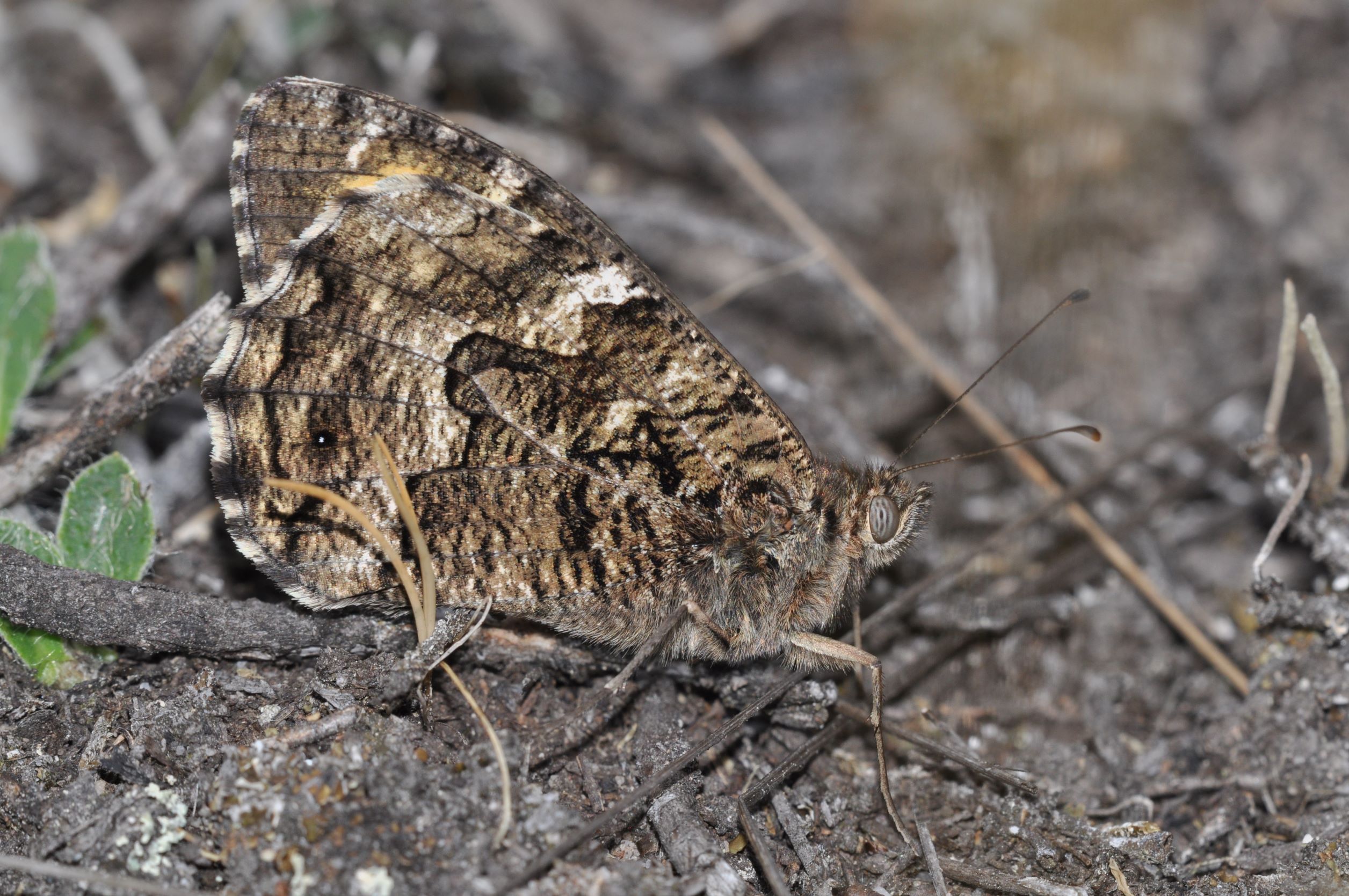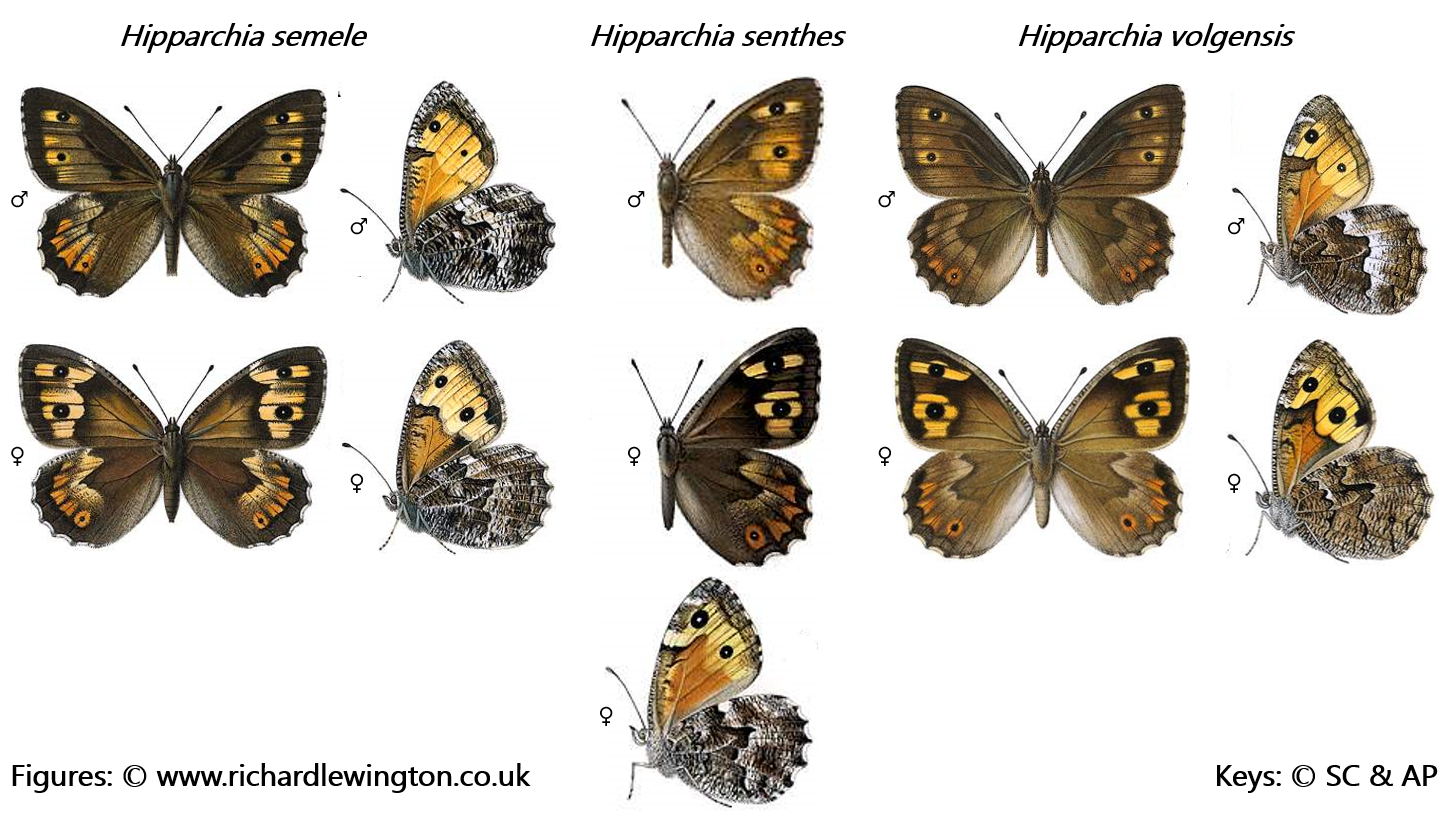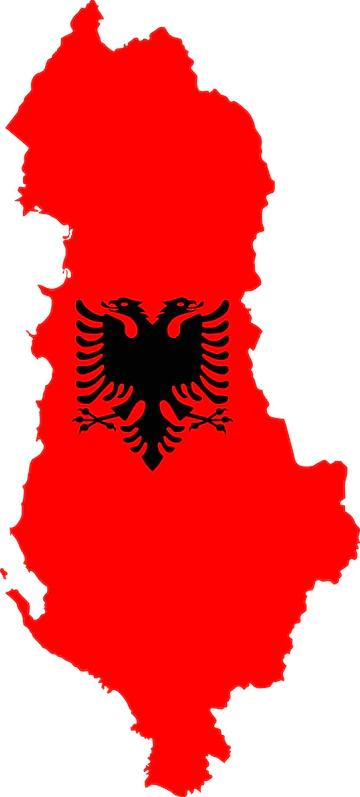|
Hipparchia semele / Grayling
Semelja
Nymphalidae - Satyrinae
Hipparchia semele (Linnaeus, 1758). TL: Sweden.
 
1a. Hipparchia semele, distribution map (09.i.2025).  Historical data ; Historical data ;  Additional data from the 2018 update ; Additional data from the 2018 update ;  New observations since the 2018 update. New observations since the 2018 update.
1b. Hipparchia semele ♂ underside. France (© Sylvain Cuvelier)
Description
♂♂
Medium size butterfly. Fw: 21-25 mm.
Ups: brown gc, broken and sometimes poorly defined yellowish-orange postdiscal bands with suffusion along the veins.
Upf: sex-brand, ocelli in s2 and s5.
Uph: small ocellus in s2.
Unf: orange gc with mottled grey-brown margin and costa, two ocelli in outer margin.
Unh: marbled light and dark grey, basal area followed by white or pale postdiscal band.
♀♀
Larger.
Ups: larger pale yellowish-orange postdiscal bands.
Unh: more uniformly mottled pattern, poorly or absent pale postdiscal band.
Similar species
Three extremely variable and similar species.
Identification based on external morphology is impossible.
Identification based on ♂♂ and ♀♀ genitalia is strongly recommended (url)
Hipparchia senthes
Hipparchia volgensis
|
 |
Life cycle
Adults: single generation from June to August.
Egg: 15-23 days.
Caterpillar: overwintering in L2 or L3.
Pupa: 30-36 days.
Habitat
Hipparchia semele inhabits sunny sandy and rocky open grasslands with open soil and scattered bushes from lowland up to 1300 m a.s.l.
Spatial requirement modest, population density can be high.
Foodplants
Caterpillar feed mainly on Agrostis capillaris, A. vinealis, Brachypodium phoenicoides, B. pinnatum, B. retusum, Corynephorus canescens, Festuca ovina and F. rubra, also mentioned are Carex leporina, C. pilulifera, Aira caryophyllea, A. praecox, Achnatherum parviflorum, Aira caryophyllea, Alpagrostis setacea, Arrhenatherum elatius, Briza media, Bromus erectus, Carex ovalis, C. praecox, Deschampsia cespitosa, D. flexuosa, Elymus repens, Koeleria pyramidata, Lolium perenne, Phleum phleoides, Poa annua, Sesleria albicans and Stipa pennata.
Butterflies feed on a large variety of flowers, mud-puddling, regularly resting on stones and tree trunks.
Distribution
Albania: only genitalia confirmed records from the Northern Albanian Alps. Possible confusion with H. volgensis and H. senthes (more genitalia confirmed data needed)
Balkan: AL - BG - BIH - GR - HR - NMK - MNE - RKS - RO - SLO - SRB
Europe: IB - IT - ALP - BAL* - NWE - UK - SCA* - EEU
Not at all present in Asia Minor, Near East, Transcaucasia, Caucasus and further east.
Conservation status
Hipparchia semele is not endangered.
Albanian Red List: DD.
IUCN Red List, category at the Mediterranean level: LC.
Useful links
Bink 2015
Pyrgus.de
Lepiforum
Euroleps
(url) Coutsis J. 1983. Description of the female genitalia of Hipparchia fagi Scopoli, Hipparchia semele Linnaeus (Satyridae) and their related taxa. — The Journal of Research on the Lepidoptera 22(3): 161–203.
|
 xx
xx 

 Historical data ;
Historical data ;  Additional data from the 2018 update ;
Additional data from the 2018 update ;  New observations since the 2018 update.
New observations since the 2018 update.